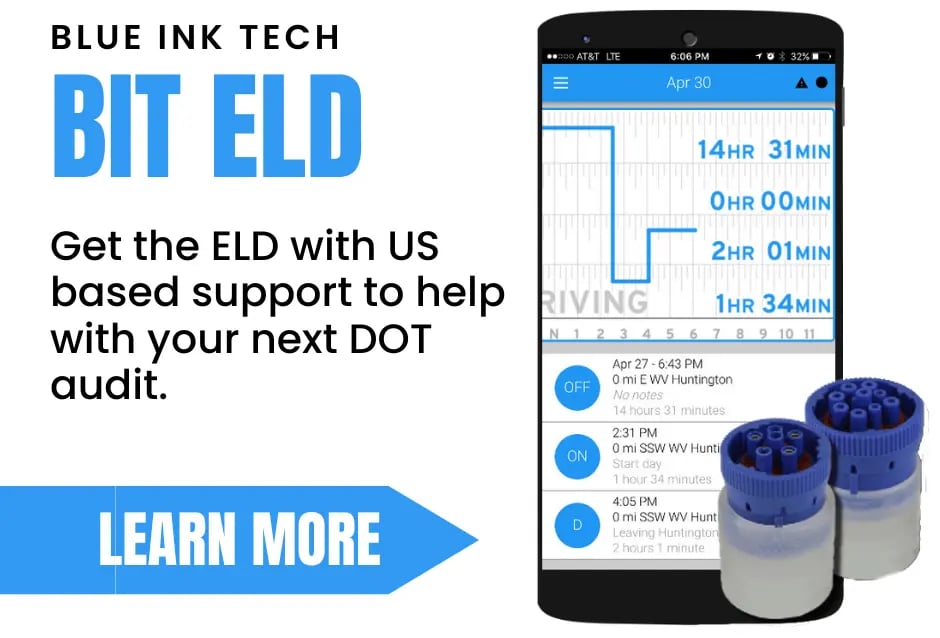DOT audits can be a nerve-wracking experience for any carrier, whether you have a fleet with multiple vehicles or you're an owner-operator. However, you should always be prepared for one. Being prepared is to know what a DOT audit is, what exactly triggers one, and what to expect when one happens.
What is a DOT audit?
A trucking DOT audit determines if a carrier is following safety protocols and proper record-keeping outlined by the FMCSA. It requires a fleet to maintain the past six months of hours of service logs and DVIRs. Problems discovered during an audit can potentially lead to fines for your company or your drivers. In extreme cases, it can lead to going out-of-service.
The FMCSA can investigate these audits in the following ways:
- Offsite – The auditor requests documents from your carrier and reviews them in their office, looking for any safety or compliance issues.
- Onsite focused – This type of audit is conducted in your carrier’s office. The auditor is looking for any safety or compliance issues.
- Onsite comprehensive – The auditor will evaluate your carrier’s safety operation at your location. They may also ask employees questions and inspect your vehicles.
- General
- Driver records
- Operational
- Vehicle
- Hazardous materials
- Accidents
What can trigger a DOT audit?
- New entrant audit. If you have recently filed with the DOT, you will receive an audit three to six months after receiving your DOT number.
- High CSA scores. Alerts for high CSA scores from violating the 7 FMCSA BASICs will place a carrier on a DOT-monitor list. Any additional alerts will guarantee a DOT audit.
- Failed roadside inspection. If drivers are failing their roadside inspections, this will definitely draw the attention of DOT auditors to inspect the carrier’s maintenance records.
- Failing the new entrant audit. The purpose of a new entrant audit is to ensure a new fleet is following safety compliance. If they fail, the DOT will likely perform another audit.
- Whistleblowers or complaints. A concerned employee may report potential violations to the DOT. If the report is found credible, this could trigger an audit.
- Random selection. Sometimes carriers will be notified of a DOT audit at random.
What happens during a DOT audit?
Auditors may request paperwork related to compliance issues. This may include, but is not limited to, vehicle and driver registration, insurance documents, logbooks, etc. The day of the audit, the auditor will request a variety of documentation regarding the driver and vehicle, including:
- Violations report
- Unassigned logs report
- Personal conveyance report
- Edit report
- ELD malfunction report
The auditor will likely look over records that cover a thirty-day time period. Once they have examined the records, the auditor may decide to review specific drivers and request copies of their driver’s logs to take with them for further evaluation.
It may take up to several weeks to hear the results since auditors are specifically looking for patterns in violations or ongoing safety issues. Once they have completed the audit, they will provide a compliance review report.
Your carrier will receive one of the following three marks:
- Satisfactory mark – carrier is following DOT requirements and regulations.
- Conditional mark – carrier is believed to have had a violation but it’s not seen as a safety risk; may need to pay fines. It's possible to set the fleet on a Safety Management Plan to bring yourself back to satisfactory.
- Unsatisfactory mark – carrier has serious violations and is found to not be complying with DOT regulations and will pay fines. If serious, the carrier may be designated as out-of-service.
Even if audits are meant to ensure safety on the roads, it can definitely be stressful when it's your turn. The key to getting through a DOT compliance audit is to always be prepared, even if your carrier is consistently DOT compliant and operates smoothly. But if you're feeling anxious, the FMCSA has published as a resource guide to help carriers like yours be prepared.
As long as you’re following FMCSA BASICs guidelines and are well organized, an audit should be a breeze.

